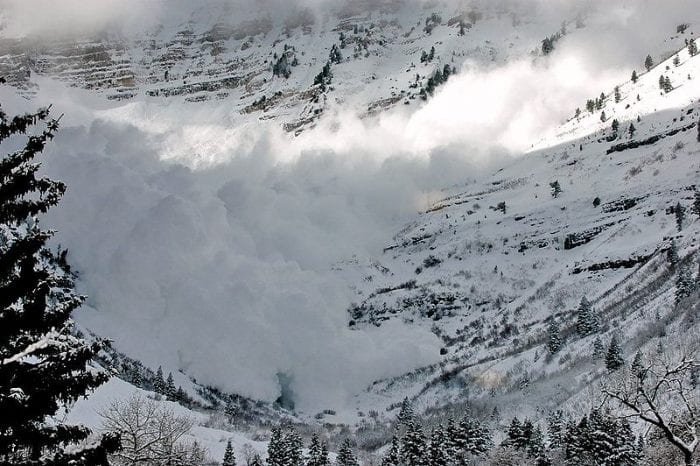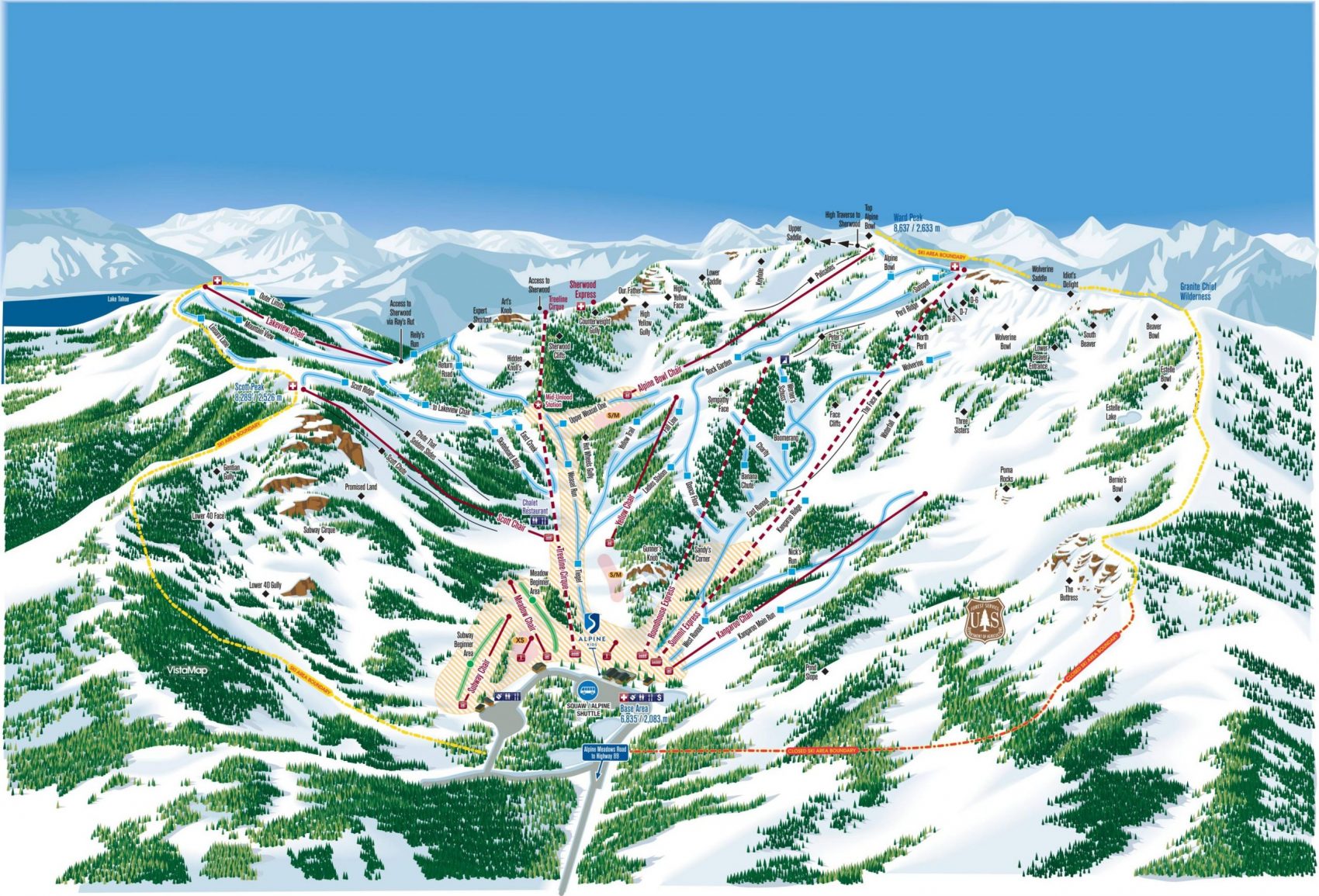
Cole Comstock, 34, of California, was killed by an avalanche on January 17, 2020, on an Alpine Meadows ski run around 10:16 in the morning. His close friend, Kaley Bloom, was also swept by the avalanche and received serious injuries but somehow survived. Comstock was an experienced skier who skied both in-bound and out-bound areas of the resort depending on conditions. Kaley Bloom and Comstock’s widow have both filed separate lawsuits against the resort claiming they negligently rushed to open the slopes for one of the season’s busiest holiday weekends. No one else was injured by the slide.
Raymond’s lawsuit alleged the resort is to blame for her husband’s death, along with accusations of negligence, gross negligence, and breach of contract. The day before the slide, the resort was closed for heavy snow (11-22in.) and high winds that significantly increased avalanche risks. The National Weather Service reported wind gusts as high as 116mph. at the top of Alpine Meadows the night before his death.
Bloom’s lawsuit, filed on February 2nd, claims the “premature opening was in response to public and economic pressure to open that particular lift and callous disregard for the dangerous combinations of conditions”. Avalanche mitigation, such as air cannons and explosive detonations, were performed in that specific area prior to the resort opening. A resort spokeswoman, Alex Spychalsky, has commented stating it was a “devastating day for our team at Squaw Valley Alpine Meadows, and we continue to share our deepest sympathies with the family and friends of those affected.”
Caitlin Raymond’s lawsuit claims they should not have opened the run under the circumstances, and the resort increased the risks beyond those normally assumed by skiers. Skiers who buy resort passes are required to sign release forms warning participation in winter activities “can be dangerous and involves the risk of injury or death. Bloom and Cole believed they were skiing a run that was safe because mitigation efforts had been performed earlier in the day. Raymond stated having the resort closed the day before “created a false and reckless illusion of safety.” The lawsuit also notes how most ski fatalities occur outside of ski resort boundaries and that in-bound deaths are very rare.
Caitlin Raymond was skiing on the other side of the mountain when she received the news from her friends that there had been an avalanche. She went to wait for her husband by a chairlift when she saw ski patrol pulling a stretcher with a body covered in blood and snow. She recognized by the ski boots that it was her husband. Ski patrol performed CPR for 45 minutes while Raymond watched helplessly. Alpine Meadows deadliest avalanche occurred in March of 1982 when 7 people were killed by an avalanche.

look forward to closed mountains on pow days
hopefully i won’t see you out in the backcountry enjoying the goods
Skiing is a dangerous sport no matter how it gets hyped by ski area marketing people and blogs like this site.
Just look at the backcountry avalanche death totals already this year.
Ski patrol are some of the most badass people men and women on the planet, with a diverse skill set that only few actually possess.
Do attorneys have similar skill set. Nope
Do ski resort presidents etc have similar skill sets? Nope
Do internet bloggers and correspondents have similar skill sets? Nope
And others etc? Hells nope.
The fact that an inbound fatality happened is tragic as it gets.
Money will not bring that person back to life.
He was the 5th or even 6th person to ski that area and was unfortunate to get swept as was the person who was also swept and suffered major injuries but survived.
If you are killed in a head on car collision due to another person texting while driving can you sue the cell phone manufaturer or cell signal provider?
Nope
why?
Cause it is an assumed liability driving a vehicle
Same as skiing
Assumed risks and liability.
Skiing sliding and boarding rocks because it is fun as partly because of the excitement and low friction co-efficient compared to walking on solid ground or sitting on you butt staring at a cpu screen.
No one tells you what terrain or area you to choose to ride.
Take responsibility for your own actions and stop blaming others.
oh one more thing….Hillary and the dems haven’t taken your guns an ammo away so get over that too.
No locals anymore,,KooKs only.
ski squaw not alpine!!!
Peace out
Ski resorts have been winning these inbound avalanche wrongful death lawsuits lately . It’s a pretty big thing to prove that everyone involved in avalanche mitigation is guilty of gross negligence, and breach of contract , not sure what that has to do with avalanche control ? Ski patrol and resort management are involved in making the decision to open or keep the resort closed in big storm cycles . The threat of avalanche always exists when you have deep powder and unstable conditions . There is absolutely no way to completely eliminate avalanche risk. There is no reward with out risk . These frivolous lawsuits have the unfortunate effect of eliminating the fun stuff. The people who seek out the dangerous fun stuff are being punished for the inexperience of the skiers who have “powder skis “ but don’t actually have the skill and experience to ski deep powder. Having powder skis doesn’t make you a powder skier . Stick to the back side at Northstar.
There is no way to prevent avalanches entirely. As long as there is snow and slope, avalanches are possible, sometimes more than others. To eliminate the risk entirely would mean that we would only get to ski on groomed runs and terrain under 30 degrees (to say nothing of other possible risks involved with skiing). The Alpine patrol does and excellent job managing what amounts to many different avalanche paths within the ski area. Many days during the season certain areas are closed, both during weekends and weekdays. Ski patrol and mountain management do not care at all about public pressure to open unsafe terrain. If the plaintiffs believe it was dangerous that day, and that they somehow know more than the professionals, they should not have been there that day. I was there that day, in almost that exact spot just minutes before it happened, so I know what was going on with the snowpack there at the time and what went down. It was a very unfortunate accident, but they acknowledged the risk by buying passes which clearly states the dangers. Hopefully this gets tossed out of court pretty quick, because otherwise powder skiing in bounds in the U.S. might become a thing of the past.
Skiing and snowboarding is an inherently dangerous activity, the purchase of a lift ticket indemnifies the resort and the employees unless gross negligence can be proven. Deep powder is the point of skiing, if you are trying to punish the resort owners for your husband’s lack of skill or decision making then your lawsuit is frivolous, avalanche mitigation will never remove the danger from the possibility that the snow will release, it’s the risk associated with deep powder skiing, there can not be reward with out risk . The cost of fighting this lawsuit will increase lift ticket prices.
Q: What part of Alpine Meadows is that top pic supposed to be showing? Cuz it’s very unfamiliar.
Looks more like the Rockies.
I’m sad for the family of the victims but this is complete BS. I hope the courts decisively smack down this lawsuit. Danger is an inherent risk of skiing and while the danger is much lower in bounds nevertheless risk is unavoidable. Alpine meadows skip patrol does an excellent job of keeping the slopes safe. It’s an insult to suggest otherwise.This was a sad terrible tragic event. But money will not bring someone back.
The avalanche photo is not Alpine Meadows. The 7 people killed in ’82 were not skiers. The ski area was closed.